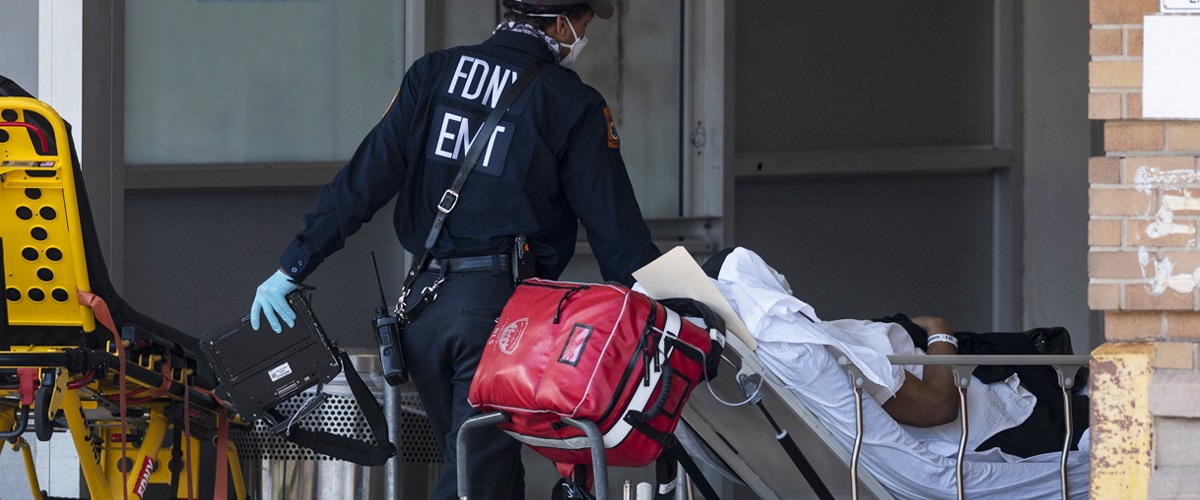New Data: Shedding Light on COVID-19 in Critically Ill Hospitalized Adult Patients
A large study by NewYork-Presbyterian and Columbia University Irving Medical Center shows adult patients with COVID-19 face challenging odds.


How do adult patients who are hospitalized with severe COVID-19 fare? Researchers at NewYork-Presbyterian and Columbia University Irving Medical Center have just released the largest prospective study in the United States to answer that question.
Published May 19 in the journal The Lancet, the report found that adults who were sick enough to be hospitalized often required critical care, and the use of ventilators was common. Some 22% of hospitalized COVID-19 patients needed intensive care. Among these critically ill patients, almost 80% received invasive mechanical ventilation, and spent an average of 18 days on a ventilator to help them breathe. The proportion of patients requiring mechanical ventilation is higher than that observed in smaller studies of patients in Washington State, where the nation’s earliest outbreaks emerged, but is similar to recent reports from Italy. Almost a third of patients experienced kidney damage requiring dialysis. By the end of the study period, nearly 40% had died of COVID-19.
Researchers followed adult patients with confirmed COVID-19 at two NewYork-Presbyterian hospitals in northern Manhattan: NewYork-Presbyterian/Columbia University Irving Medical Center and NewYork-Presbyterian Allen Hospital during the first month of the outbreak in New York City. Of the 1,150 patients admitted between March 2 and April 1, 2020, 257 needed intensive care.
Older age, the presence of underlying heart and lung disease, and biomarkers of inflammation and thrombosis were major risk factors associated with death from COVID-19, which mirrors patterns of the illness in China, the U.K., and Italy.
“In the U.S., there have been almost 1.5 million confirmed cases of COVID-19 and nearly 90,000 deaths,” says study co-author Dr. Natalie H. Yip, a critical care attending physician at NewYork-Presbyterian/Columbia University Irving Medical Center and an associate professor of medicine at Columbia University Vagelos College of Physicians and Surgeons. “Although the clinical spectrum of disease has been characterized in reports from China and Italy, until now, detailed understanding of how the virus is affecting critically ill patients in the U.S. has been limited to reports from a small number of cases. We aimed to describe the epidemiology and clinical course in critically ill COVID-19 patients in a U.S. hospital setting and identify risk factors for death.”
“Our study provides an in-depth understanding of how COVID-19 may be affecting critically ill patients in U.S. hospitals,” says the study’s senior author, Dr. Max O’Donnell, a pulmonologist at NewYork-Presbyterian/Columbia University Irving Medical Center and the Florence Irving Associate Professor of Medicine at Columbia University Vagelos College of Physicians and Surgeons. “As in other studies of COVID-19, large percentages of critically ill patients required mechanical ventilatory support and renal replacement therapy. By supplying granular detail on risk factors and outcomes, we are better able to inform goals of care discussions for patients and families.”
Other key demographics of critically ill COVID-19 patients detailed in the report include:
• More men (67%) than women were affected.
• The median age was 62.
• 22% were under age 50.
• More than 80% had at least one chronic condition. The most common were high blood pressure (63%), diabetes (36%), and obesity (46%).
• Almost two-thirds were Hispanic or Latino (62%).
• One-fifth were black or African American (19%).
• African American and Latino patients had increased delays in time to presentation. It is unclear whether this reflects barriers in access to care, care seeking behavior, or other factors.
• 5% were healthcare workers.
As of April 28, when follow-up concluded (allowing each patient to be observed for at least 28 days), 37% were still being treated, and 23% had been discharged.
The authors cautioned against generalizing the data to other hospital settings and noted that more research in more diverse populations was needed.
“On a personal note, this research has emphasized to me the necessity of doing high-quality clinical research even during an epidemic, and highlighted the importance of cross-departmental collaboration,” says Dr. O’Donnell.
Learn more about how to protect yourself from COVID-19, and why the disease is mild for some and deadly for others.

